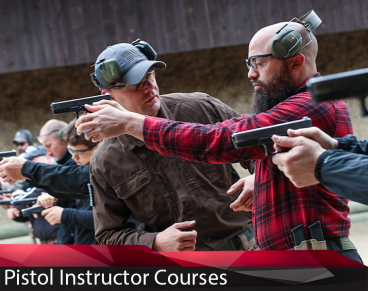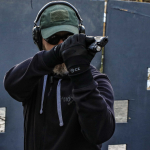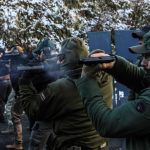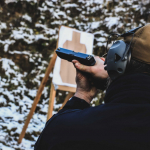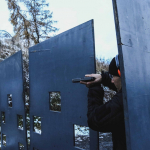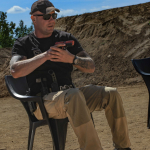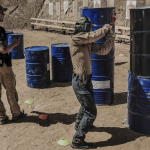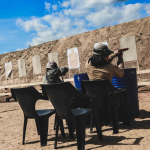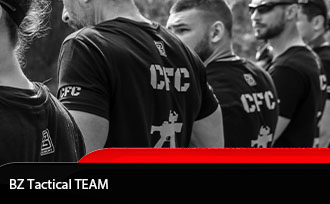What is C.A.R – Center Axis Relock Shooting System, and is it worth learning?
-
Hits: 16023

The Center Axis Relock (C.A.R.) system, is a tactical shooting method designed for close-quarters confrontations, emphasizing weapon retention, speed, and accuracy. Let's see if it's practical, and talk about the pros and cons of this system.
What is C.A.R. – Center Axis Relock Shooting System, and is it worth learning?
Meet the creator of the system – Paul Castle.
First of all, to understand the C.A.R System, and its applications, we need to understand who the creator of the system was.
Paul Castle was a highly experienced Law Enforcement and tactical training expert, known for his work in developing the Center Axis Relock (C.A.R.) shooting system. With over 32 years of operational and training experience, Castle began his career as a detective and training officer in the U.K. Police Force, where he was involved in investigations ranging from violent crimes to counter-terrorism operations. His distinguished career included specialized Military training, particularly in explosive ordnance, fibre optic surveillance, and close protection duties. He even served in highly sensitive roles such as guarding members of the British Royal Family, including Queen Elizabeth II and Margaret Thatcher.
Castle’s expertise extended to firearms training, where he became a certified instructor in a wide range of tactical areas, including SWAT, less-lethal munitions, and explosive entry techniques. His skills were sought after internationally, and he trained elite units of various Law Enforcement and Military groups across the U.S., U.K., and Europe. He worked closely with organizations such as the FBI, U.S. Special Forces, and NATO Military police, earning commendations for his contributions to training in high-risk and specialized environments.
Among his many achievements, Castle authored over 45 training programs and was featured in Law Enforcement publications and media, where he was recognized for his innovations in officer survival techniques and firearms tactics. His most notable contribution was the development of the C.A.R. system, a shooting method designed to enhance accuracy and survivability in close-quarter combat situations. This system has been adopted by numerous police and Military units worldwide, solidifying Paul Castle’s legacy as a pioneer in tactical training .
"Carrying the Legacy: Jeff Johnsgaard and the Evolution of the C.A.R. System".
In 2009, Paul Castle, the creator of the C.A.R. system, named Jeff Johnsgaard as his official successor to carry forward the system. Following Castle’s passing in 2011, Jeff took on the responsibility of advancing and refining the C.A.R. system, not only preserving its core principles but also expanding its instructional framework. Under Jeff's guidance, the system has evolved into the 360° Close Quarter Defense (CQD) program, which incorporates both firearms and physical skills alongside innovative teaching techniques designed to enhance learning and retention.

Jeff’s dedication to the system has been recognized internationally, and in 2016, he was appointed as the International Director of Training by Kelly S. Worden for the Worden Defense System and Natural Spirit International. Despite his full-time role as a police officer, Jeff continues to ensure the legacy of the C.A.R. system by holding annual instructor courses, focusing on the 360° CQD, to ensure that it remains an effective and relevant tool for Law Enforcement and tactical operators.
I had the pleasure to learn Center Axis Relock System from Jeff’s instructor Valerio Lino from Veritas Tactical based in Brazil.
Introduction, and Characteristics of the Center Axis Relock System (C.A.R).

The Center Axis Relock (C.A.R.) system, is a tactical shooting method designed for close-quarters confrontations, emphasizing weapon retention, speed, and accuracy. Born from an understanding of natural body mechanics, the system allows operators to maximize control of their weapons while maintaining a high degree of mobility and precision, even in high-stress situations. One of the key features of the C.A.R. system is its ability to seamlessly transition between different weapons—such as OC spray, handguns, or long guns—without requiring changes in stance or shooting position. This adaptability ensures that operators remain balanced, stable, and ready for action regardless of the weapon in hand.
At the heart of the system is the concept of dividing the body into a "weapon side" and a "reaction side." This setup helps maintain weapon control close to the operator’s body, offering unparalleled retention and reducing the risk of disarming by an opponent. The "reaction hand" is free to block, strike, or assist in weapon handling, and the use of natural body weight enhances both defensive and offensive movements. The Center Axis Relock system promotes the use of harmonious muscle placement, which not only improves weapon retention but also reduces muscle fatigue and improves efficiency in tasks such as loading, reloading, and target acquisition. By simplifying body movements and aligning them with gross motor skills, the C.A.R. system enhances the operator's performance in high-risk environments, making it a powerful tool for Law Enforcement and Military personnel in close-quarter engagements.
The Connection Between Center Axis Relock and John Wick

Many shooters are familiar with the Center Axis Relock (C.A.R.) system due to its prominent presence in the John Wick film series. However, it’s important to note that the main character, portrayed by Keanu Reeves, utilizes a modified version of the C.A.R. system. While Reeves delivers an impressive performance, he did not receive training from Jeff Johnsgaard or anyone from the C.A.R. team. Instead, he learned this adaptation for the film through different sources.
If you closely observe John Wick's shooting techniques, you'll notice that his stance deviates from the traditional bladed position characteristic of the C.A.R. system. Additionally, his pistol is not consistently aligned with his non-dominant eye, and he employs a standard thumbs-forward grip rather than the distinct grip associated with C.A.R. This divergence in technique highlights the cinematic interpretation of shooting styles, which often prioritize visual flair and dramatic effect over the practical application of established systems. While the John Wick films showcase an exciting approach to firearms handling, they do not entirely represent the principles or mechanics of the Center Axis Relock system as taught in real-world training environments.
Benefits of the C.A.R. System: Tested in Range and CQB Environments

-
Stable Shooting Platform with Superior Recoil Management
The C.A.R. system provides a highly stable shooting platform, enabling shooters to control recoil effectively. The bladed stance keeps the shooter’s core engaged, helping to absorb recoil and keep the weapon on target, which is essential during rapid fire or high-stress situations.
-
Quick Sight Picture Acquisition
One of the standout benefits of the C.A.R. system is the quick and natural sight alignment. Since the weapon is held closer to the body and in the operator's natural line of sight, the shooter can acquire a sight picture faster. This is particularly useful in high-stakes situations where speed and precision are crucial.
-
Eliminates Double Vision Issues
The C.A.R. system inherently resolves the problem of double vision, which is a common issue in traditional stances. By positioning the nose in such a way that one eye is naturally covered, the shooter uses only their dominant eye to focus on the sights, preventing any confusion from overlapping sight pictures.
-
Crisper and More Accurate Sight Picture
With the sights positioned closer to the eyes, shooters experience a more defined and precise sight picture. This proximity allows for greater accuracy, especially when engaging targets at close quarters, making the system highly reliable in high-pressure environments.
-
Enhanced Weapon Retention
The bladed stance of the C.A.R. system positions the firearm close to the body, increasing weapon retention. This is a critical advantage in close-quarter combat where an opponent may attempt to disarm the shooter. The front hand can be used to push or defend against an attacker while maintaining control of the weapon.
-
Effective in Confined Spaces, Especially Vehicles
In environments with limited mobility, such as inside vehicles, the C.A.R. system shines. Traditional stances make it difficult to achieve full 360-degree coverage in tight spaces, but the compact nature of the C.A.R. stance allows the shooter to engage threats in multiple directions without the need for excessive body movement.
-
Optimized for Close Quarters Environments
The C.A.R. system is particularly well-suited for Close Quarters Battle (CQB). The compact, efficient movements allow operators to move fluidly through tight spaces while keeping the weapon in a ready position, ensuring full retention and quick response to threats.
-
Shooting on the Move with a Greater Range of Motion
Unlike traditional stances, the C.A.R. system provides an increased range of motion while moving and shooting at various angles. The shooter can maintain stability and balance even while moving forward and firing backwards. This flexibility is critical in dynamic CQB scenarios where threats may come from any direction.
-
Smaller Target Profile
The bladed stance naturally makes the shooter a smaller target, minimizing exposure to threats. Although there are some disadvantages, which will be discussed later, this smaller profile offers tactical advantages in terms of reducing the risk of getting hit in combat.
-
Easy to Learn and Adapt for Beginners
Despite its advanced applications, the C.A.R. system is relatively simple to learn and adopt, even for beginner shooters. Its intuitive stance and alignment techniques allow new operators to achieve proficiency quickly, making it a highly versatile option for both novice and experienced shooters.
Drawbacks of the C.A.R. System
-
Limited Effectiveness at Medium and Long Distances
The C.A.R. system excels in close-quarters combat but is less effective at medium and long distances. Personally, I would limit its use to engagements within 7 meters. Beyond that range, transitioning to a traditional shooting stance is often more practical. Although Paul Castle developed the Apogee Position for longer-range engagements, many shooters may find it just as efficient to revert to their standard stance for improved accuracy and control.
-
Reduced Visibility to the Support Side
The bladed stance in the C.A.R. system narrows the field of vision, particularly on the support side. Since the head is turned towards the weapon side, operators may experience reduced peripheral awareness to their opposite flank, which could be problematic in dynamic environments where threats emerge from multiple angles.
-
Limited Mobility Toward the Support Side
Mobility is also impacted when moving toward the support side. Without repositioning the feet, moving quickly in that direction can be challenging. The bladed stance favors movements toward the weapon side, which can slow down your ability to shift laterally in the opposite direction, reducing your agility in fast-moving scenarios.
-
Exposed Body in Bladed Stance
While the bladed stance offers the advantage of a smaller target profile, it also exposes certain vulnerabilities. When wearing a plate carrier, the sides of the body, particularly the ribs, are less protected. This can increase the risk of injury if you are engaged from an angle or if a threat emerges from the exposed side.
-
Ambidextrous Nature Requires Practice
The ambidextrous nature of the C.A.R. system demands proficiency in switching weapon hands, which can be difficult for less experienced shooters. Mastering this skill requires dedicated training, as it is crucial in scenarios like shooting from the passenger seat of a vehicle, where the weapon may need to be transferred to the opposite hand to engage threats effectively. This learning curve can pose a challenge for those unfamiliar with dynamic shooting techniques.
My Conclusion
While the C.A.R. system has its limitations, such as reduced effectiveness at longer distances and challenges with visibility and mobility on the support side, the advantages far outweigh the drawbacks. It is a highly effective close-quarters tool, particularly when integrated with other shooting techniques. Rather than replacing your standard stance, the C.A.R. system should be viewed as a valuable addition to your tactical toolkit. Whether you’re in Law Enforcement, the security industry, or a responsible civilian interested in defensive shooting, the C.A.R. system is a skill worth mastering.
The good news is, you don’t need to travel to the U.S. and deal with ITAR restrictions to learn it. BZ Academy in Poland offers the opportunity to train in this system, bringing world-class instruction closer to home.
See you guys at the training,
Bartosz
BZ Academy Training Coordinator
UPCOMING CENTER AXIS RELOCK COURSE (C.A.R)
C.A.R System (Center Axis Relock)

Welcome to our highly specialized and comprehensive 2-day firearms training course centred around the innovative Center Axis Relock (CAR) system. In an ever-evolving world where personal safety and effective self-defense are paramount, mastering cutting-edge firearm techniques is essential. Our CAR system course is designed to equip shooters of all levels with the knowledge and skills required to harness the full potential of this groundbreaking shooting methodology. C.A.R. system in not only movie fiction used by John Wick but is primarily a valuable addition to regular shooting techniques that every shooter should learn, and used by many Law Enforcement agencies.
Welcome to our highly specialized and comprehensive 2-day firearms training course centred around the innovative Center Axis Relock (CAR) system. In an ever-evolving world where personal safety and effective self-defense are paramount, mastering cutting-edge firearm techniques is essential. Our CAR system course is designed to equip shooters of all levels with the knowledge and skills required to harness the full potential of this groundbreaking shooting methodology. C.A.R. system in not only movie fiction used by John Wick but is primarily a valuable addition to regular shooting techniques that every shooter should learn, and used by many Law Enforcement agencies.
The Center Axis Relock (CAR) system is a revolutionary firearms technique that was developed by Paul Castle, a highly respected firearms instructor with extensive Law Enforcement and self-defense experience. This system has gained immense popularity and recognition for its adaptability, efficiency, and effectiveness in various tactical and defensive shooting scenarios.
At its core, the CAR system employs a unique and ergonomic shooting stance that maximizes both control and accuracy. By bringing the firearm closer to the body and adopting a bladed stance, CAR allows shooters to maintain a natural point of aim, ensuring rapid target acquisition and enhanced shooting precision. This method also facilitates faster transitions between targets, making it particularly suited for close-quarters combat situations where speed and accuracy are of the essence.
Key Benefits of the C.A.R System:
1. **Enhanced Control**: The CAR system provides shooters with a stable and well-balanced platform, reducing recoil and allowing for more controlled and accurate shots.
2. **Improved Target Acquisition**: C.A.R's intuitive stance and shooting posture enable shooters to acquire targets swiftly and maintain situational awareness in dynamic environments.
3. **Versatility**: This technique is adaptable to various shooting scenarios, making it suitable for both Law Enforcement professionals and civilians concerned with personal defense.
4. **Reduced Exposure**: The C.A.R system minimizes the shooter's profile, making them a smaller target and enhancing their chances of survival in a defensive situation.
5. **Efficiency Under Stress**: C.A.R's simplicity and efficiency shine in high-stress situations, ensuring that shooters can perform effectively when it matters most.
6. **Increased Speed**: Faster target transitions and more efficient shooting movements enable shooters to engage multiple threats rapidly and decisively.
Our 2-day CAR Firearms Training Course is designed to empower participants with a solid foundation in the C.A.R system, equipping them with the skills and confidence needed to excel in various shooting scenarios. Whether you are a seasoned firearm enthusiast, a Law Enforcement professional, or someone looking to enhance your personal defense capabilities, this course offers a unique opportunity to master the Center Axis Relock system and unlock your full shooting potential.
Join us for this transformative firearms training experience and take your shooting skills to the next level with the CAR system. Your journey to becoming a more capable, confident, and effective shooter begins here.
Center Axis Relock is also known from the Movie Series John Wick and is often used by the main character.
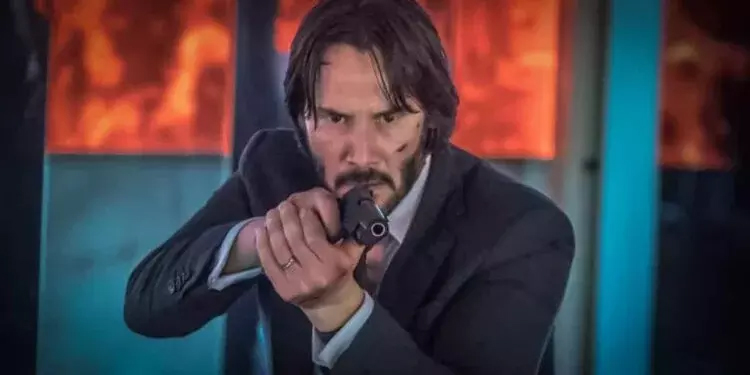
Topics to be covered
On the Center Axis Relock Course, we will cover:
-
Introduction to the system
-
Center Axis Relock Grip
-
Shooting Stances (Close Quarter and Apogee stances)
-
Isometric Tension Stance for Close Quarter
-
C.A.R Ready Positions
-
Close Quarter Engagements with single and multiple targets
-
Using hand switch techniques to utilize the system fully
-
Shooting from a seated position
-
Shooting on the move including various directions
SKILL PERQUISITES: The candidate should have basic firearms experience with Pistols (safe pistol manipulation, and solid fundamentals). CFC Fundamentals Course or Tactical pistol or equivalent is recommended.
WEAPONS: GLOCK 17, GLOCK19
AMMUNITION: 9mm – 350 rds. Depends on group skills and progress.
WHAT TO BRING (Mandatory)?: Tactical or outdoor pants with loops to facilitate a 40mm wide belt.
Clothing appropriate for climate and conditions.
This Course is run by SIG SAUER Academy (USA) Certified instructor
Airport Pick-Up and Transportation Information for Your Course in Poland
Arrival Information:
-
Your destination airport is Wroclaw Airport (WRO), Poland.
-
Plan to arrive one day before the course begins to allow for smooth travel and rest. Your accommodation is booked from one day before the course.
-
We will pick you up from Wroclaw Airport based on the arrival times of other participants, with the latest pick-up being around 18:00 on the day before the course starts. If your flight lands after 18:00, you’ll need to arrange your transportation to the hotel (via rental car, taxi, or train).
-
The pick-up time will be confirmed by email once all participant flight schedules are received. Usually at 18.00, but can be earlier if all the participants land earlier.
Departure Information:
-
On the last day of the course, we will drop you off at Wroclaw Airport by 18:00.
-
If your return flight is scheduled for the next day (early morning), you should arrange overnight accommodation in Wroclaw. We can drop you off at your hotel instead of the airport.
-
If your return flight is earlier than 18:00 on the last day, we’ll assist you in arranging transport to ensure you reach the airport on time.
Flight Recommendations:
-
If you're flying from the uk, we recommend using Wizz Air or Ryanair, as both airlines offer direct flights to Wroclaw from major uk airports.
-
For travelers from other countries, please check your flight options. Be ready for pick-up at Wroclaw Airport by 18:00 the day before the course begins.
-
We recommend using Skyscanner (https://www.skyscanner.net) to find the best flight deals.
Alternative Transport Options:
-
If your flight arrives early in the day and you prefer not to wait for the late pick-up, you can take a train from Wroclaw’s main train station to Lubań Śląski, where the hotel is located. The train journey takes about 2 hours and costs approximately 7 EUR.
-
A direct bus from Wroclaw Airport to the TRAIN STATION in Wroclaw costs about 2 EUR.
-
This is a popular and convenient option for students arriving early in Wroclaw, as you can check-in early in the hotel, and relax instead of waiting at the airport for the pickup at 18.00.
-
Driving to the Course:
-
If you plan to drive, your destination is:
BZ Academy
Radostów Średni 59-800, Poland
-
We arrange accommodation in hotels around Lubań (postcode 59-800). If you're driving, use this postcode to plan your route.
-
The hotel addresses differ from the BZ Academy Training facility. We will email you specific directions to your hotel before the course.
THIS COURSE INCLUDE:
-
Customer care in English from registration through the course and after.
-
Skilled and Experienced Professional Instructors, who will give you personal feedback, and corrections to improve your weapon handling skills.
-
Accommodation - you arrive one day before the course and leave the same day when the course finishes in the evening.
-
Food - Full board. No need to worry about that. if you have any requirements such as vegetarian/allergies etc let us know in advance.
-
Airport Pick up and drop off at specific hours
-
Range transfers from/to hotel
-
Live ammunition
-
Modern Firearms
-
training equipment such as holster/mag pouch/rifle sling etc.
-
Safety equipment such as eye and ear protection
-
BZ Academy Patch
-
BZ Academy International Certification
FLIGHTS are NOT INCLUDED.
YOU CAN RELAX - WE GOT EVERYTHING COVERED! SECURE YOUR SPOT NOW.
Event Properties
| Event Date | 10-05-2025 9:00 am |
| Event End Date | 11-05-2025 4:00 pm |
| Cut off date | 02-05-2025 |
| Available place | 1 |
| Individual Price | £650 / €750 ALL INC |
| Location | BZ ACADEMY TRAINING FACILITY - POLAND |
| Categories | Intermediate, Firearms Courses |
Related Events

Firearms courses
14-03-2025 9:00 am
- 16-03-2025 4:00 pm
£750 / €860 ALL INC
The 3-Day Practical Pistol Course begins with a focus on the fundamentals of shooting, where participants will learn proper grip, stance, sight alignment, trigger control, and recoil management to build a strong foundation for accurate and consistent shooting. On the second day, the training shifts to dynamic shooting, teaching students how to engage targets while on the move, improving mobility and adaptability in real-life scenarios. The final day covers the essentials of concealed carry, including drawing from concealment, target engagement under pressure, and enhancing situational awareness for effective self-defense.
25-04-2025 9:00 am
- 27-04-2025 4:00 pm
£800 / €920 ALL INC
Welcome to BZ Academy's revolutionary new course: "ONE MAN CQB" – Empowering you for ultimate self-defense preparedness. In an unpredictable world, being equipped with essential skills can mean the difference between life and death. Our cutting-edge program is designed to provide you with the expertise needed to confidently navigate high-stress scenarios, such as home invasions and active shooter events, using a pistol as your primary tool.
Through a series of meticulously crafted modules, participants will master the art of maneuvering through confined spaces, making split-second decisions, and effectively neutralizing threats. You'll gain insights into situational awareness, proper weapon handling, and strategic positioning – skills that could save lives in critical moments.
16-05-2025 9:00 am
- 20-05-2025 4:00 pm
£1600 / €1850 ALL INC
Learn how to run firearms courses safely and professionally. Develop your skills and career. Discover your new passion. Learn from the best tactical school in Europe how to run shooting courses.
The main objective of the BZ Academy firearms instructor Course is to provide all the necessary knowledge to our students who after completion of pistol instructor certification will be able to run pistol classes. Students who are evaluated best by instructors during the course and meet all BZ Academy requirements will receive an offer to work with BZ Academy as a shooting instructor. We'll teach you BZ Academy training concepts and teaching methodology as well as supply you with ready-to-go teaching materials, so you can run shooting courses on your own under BZ Academy or as an independent shooting instructor.
Gallery
Location Map
If you plan to become a firearms instructor, it's worth reading THIS ARTICLE.


